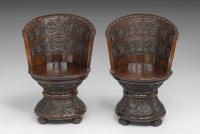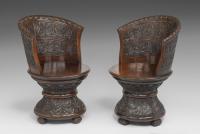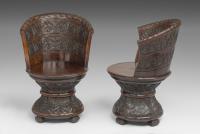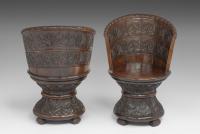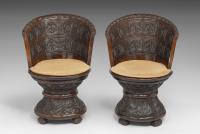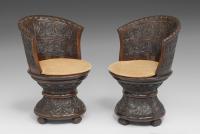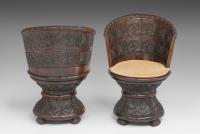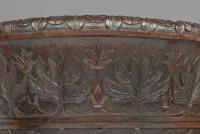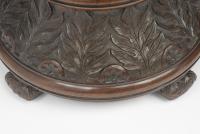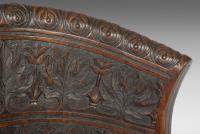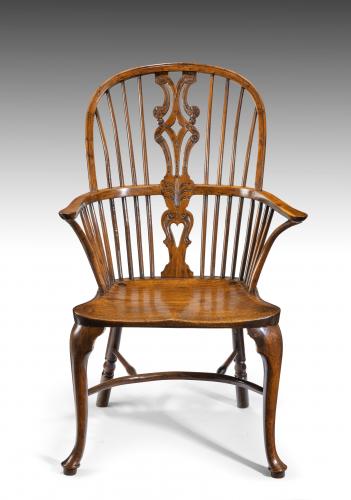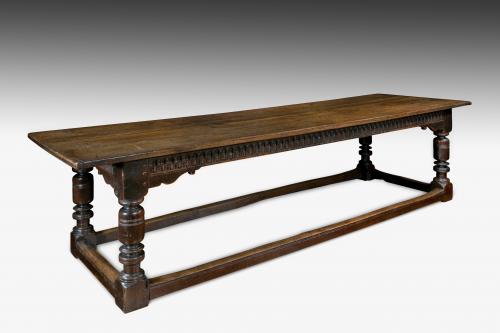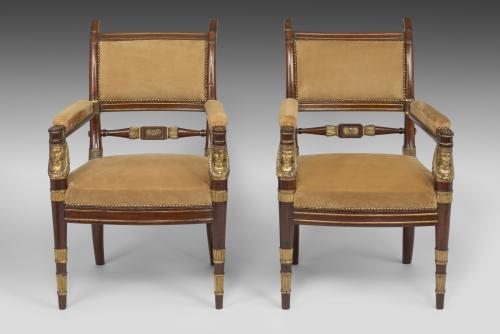
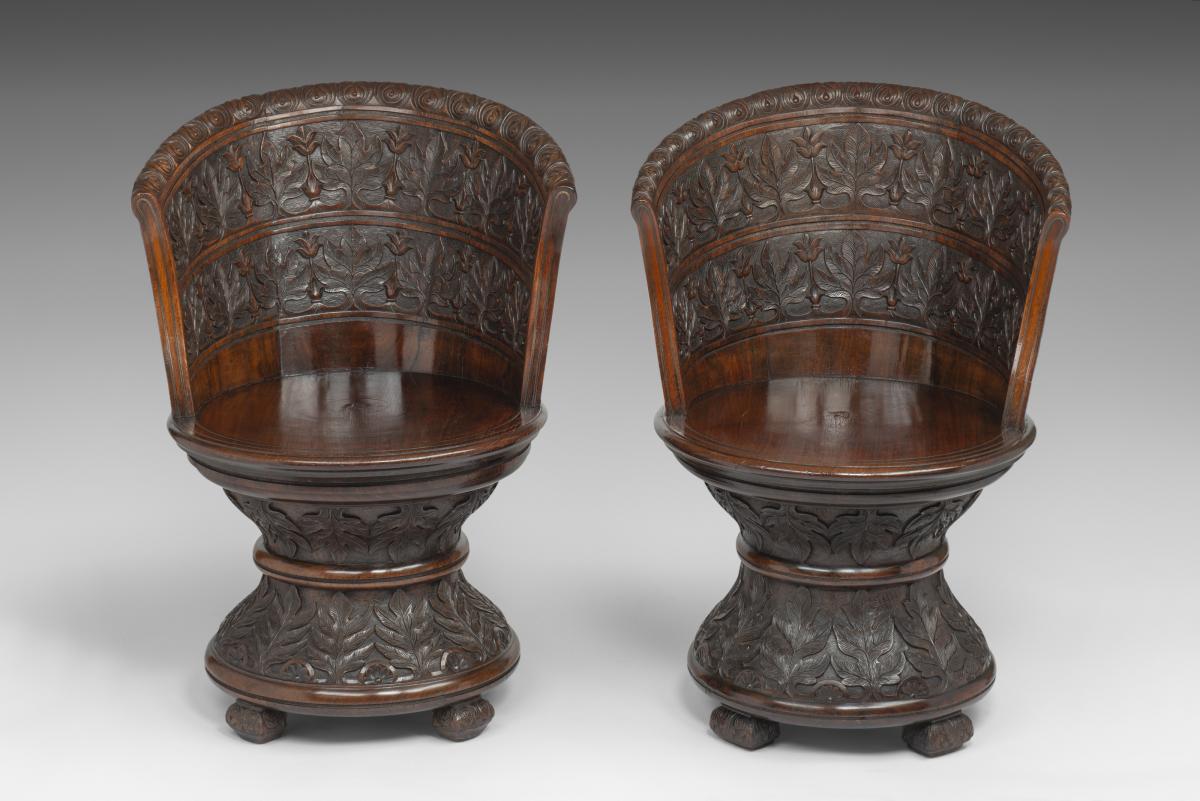
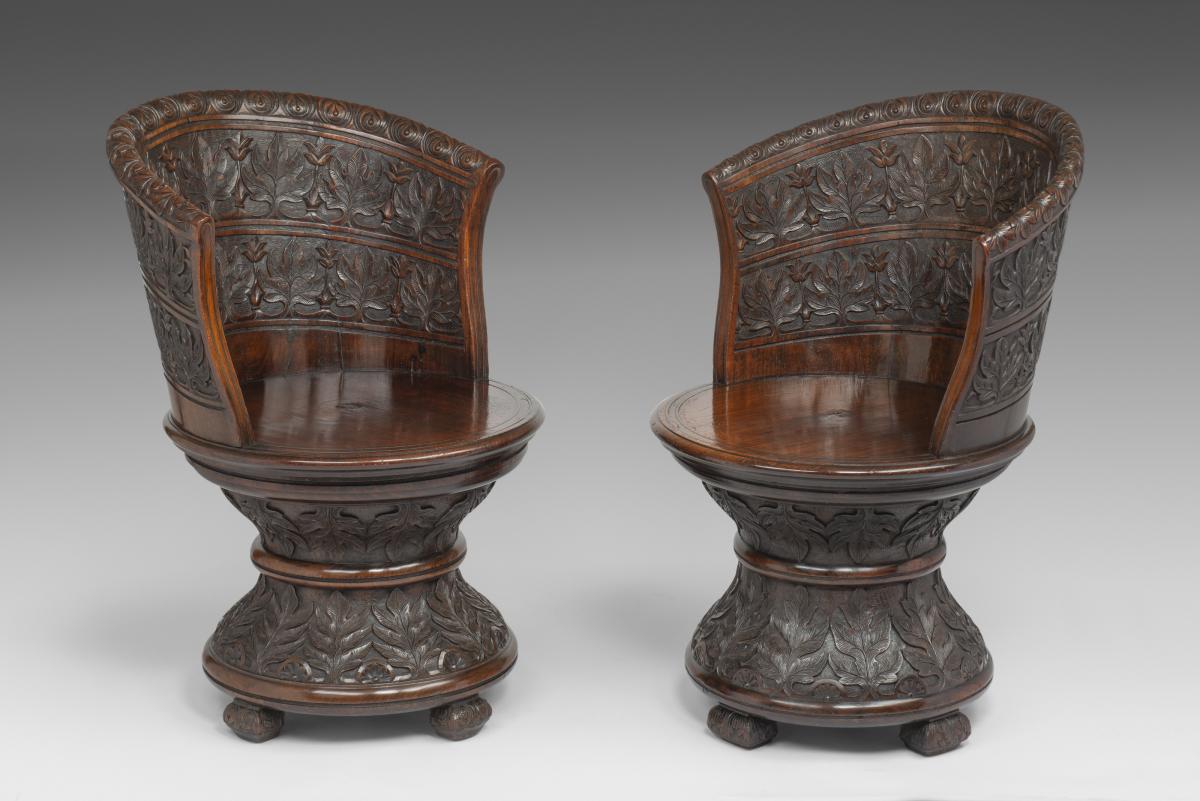
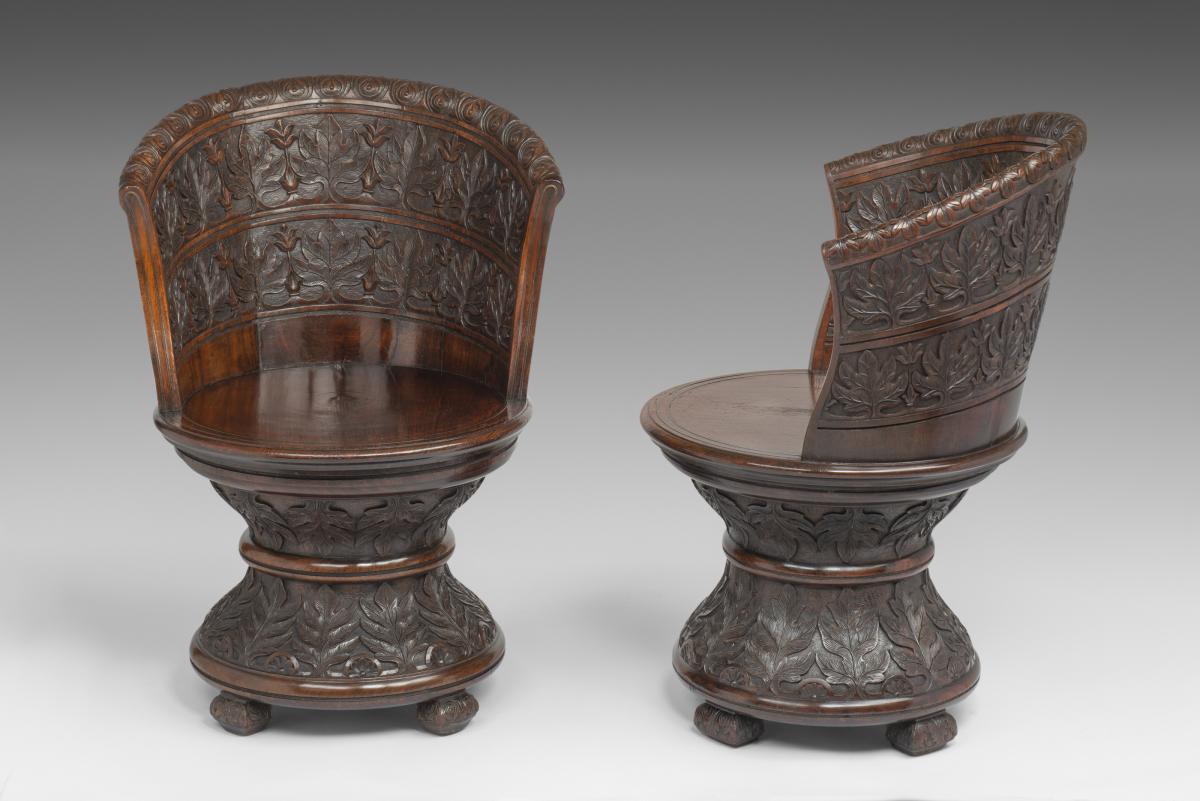
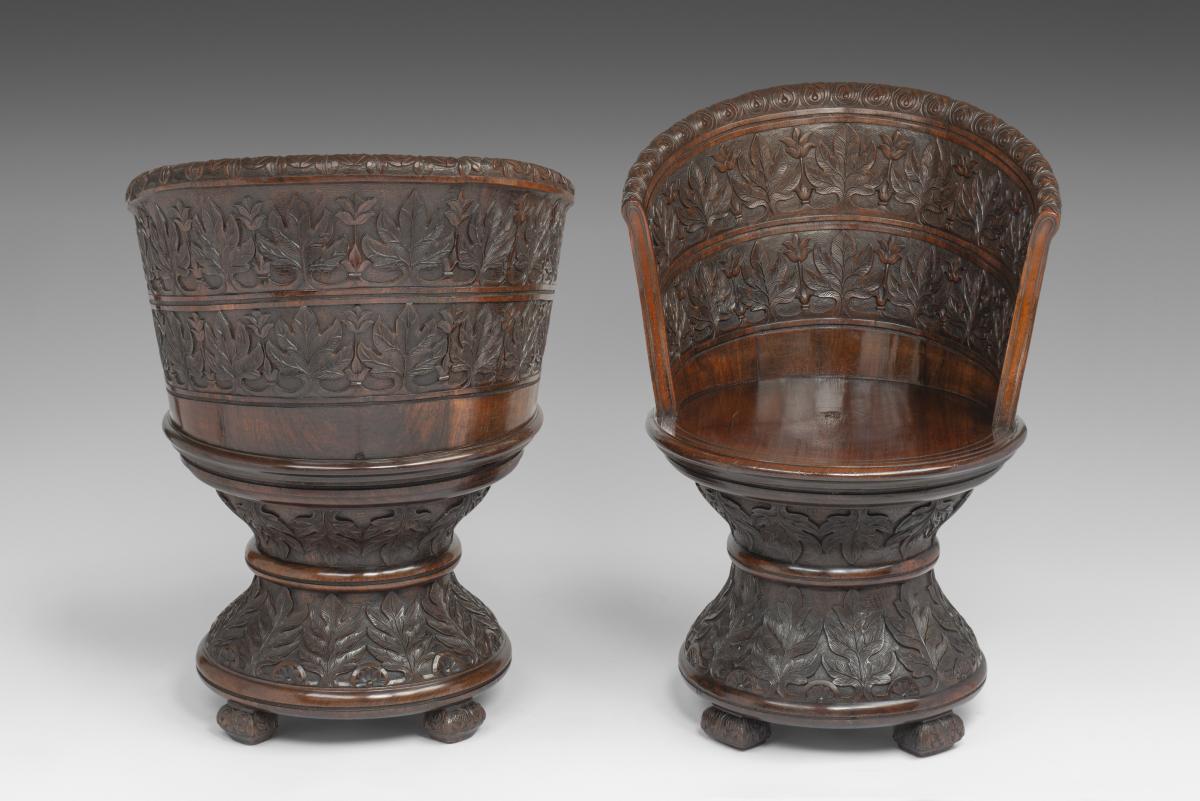
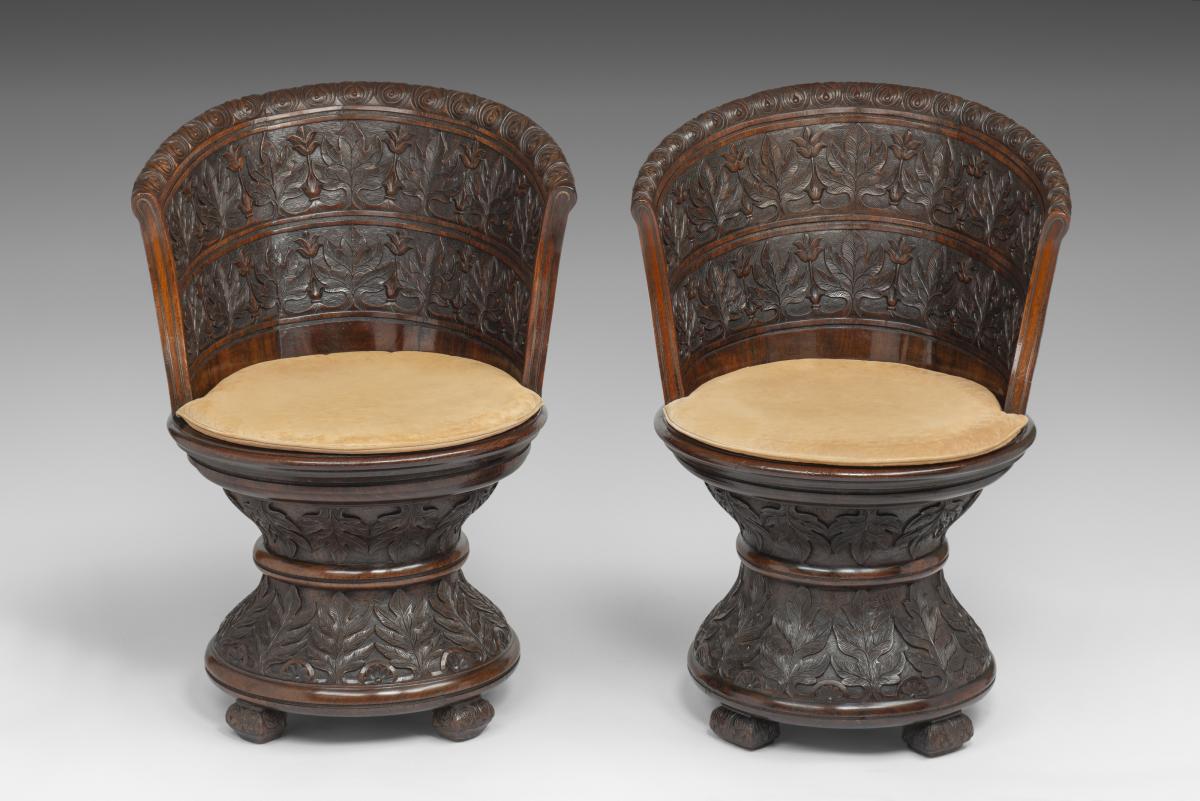
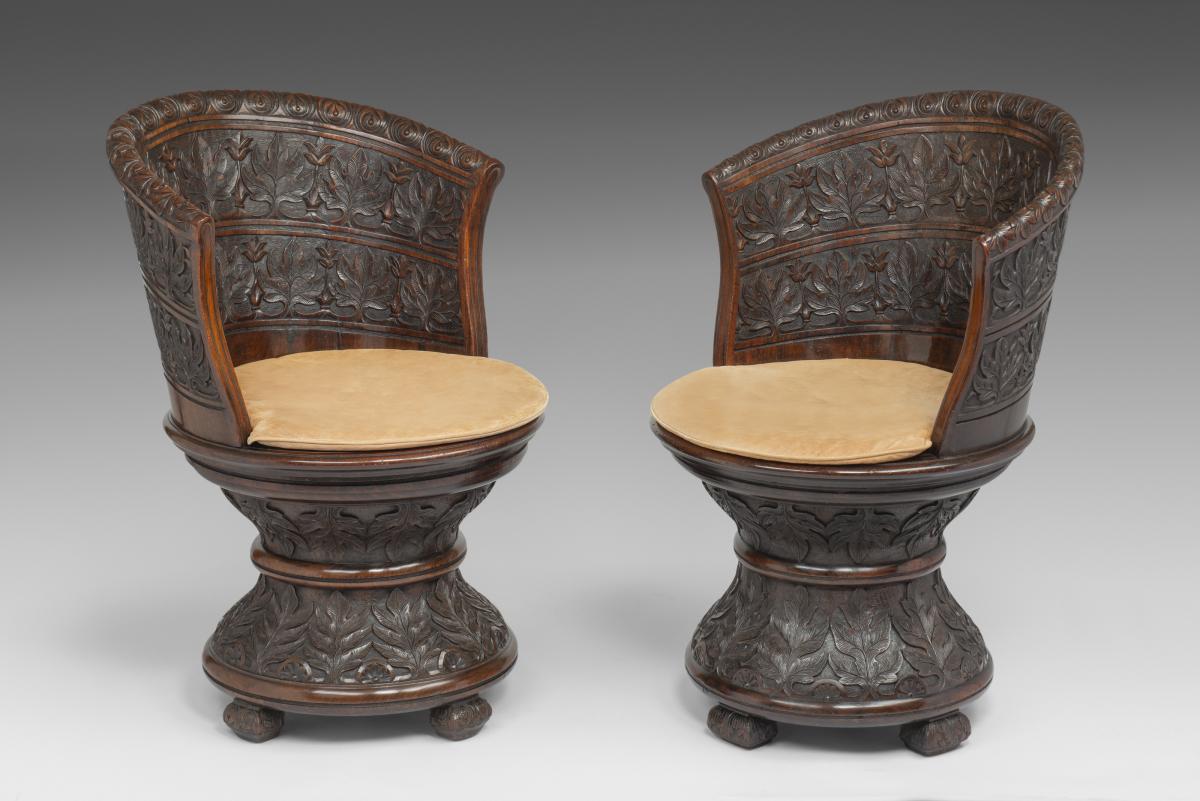
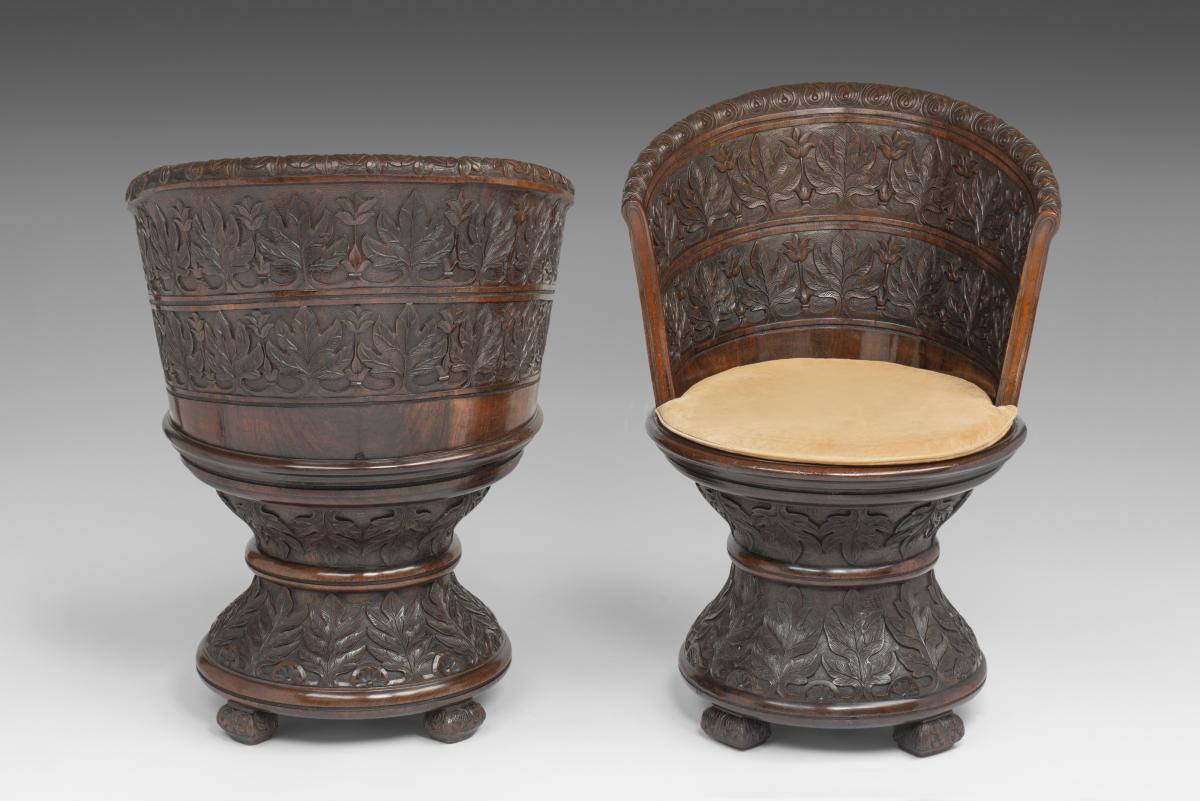
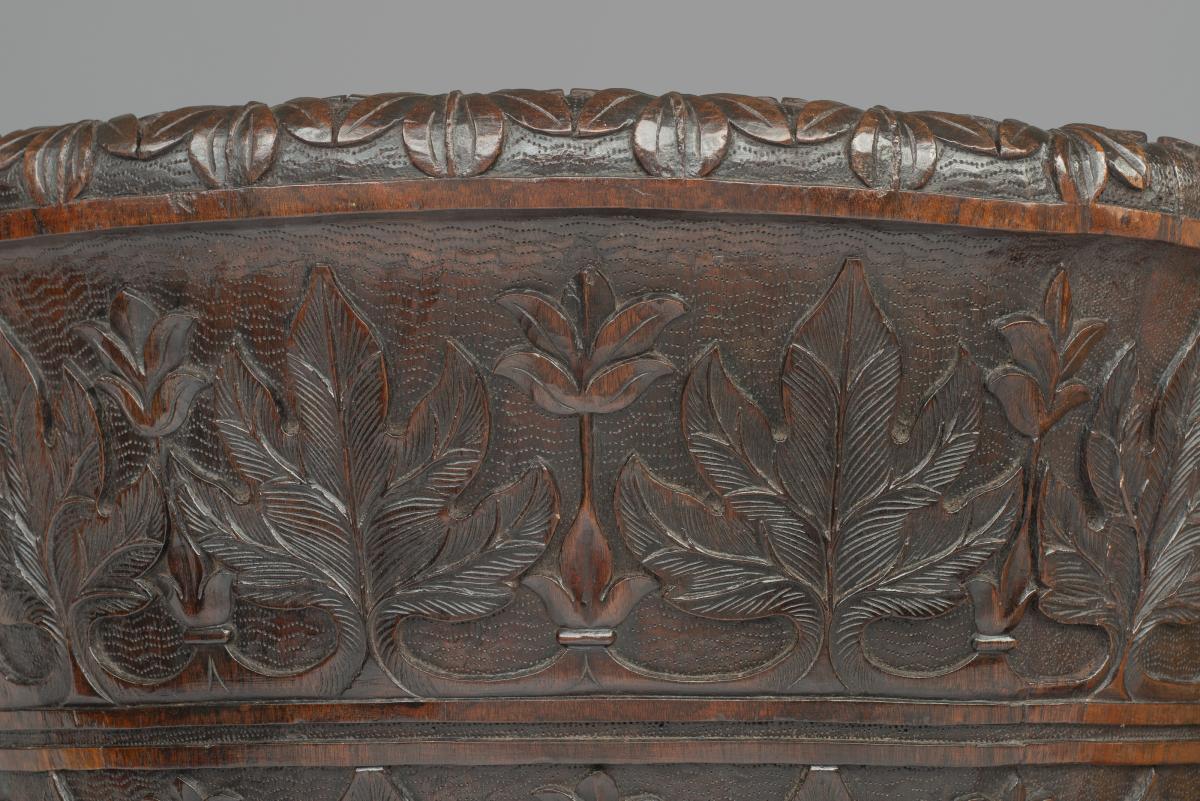
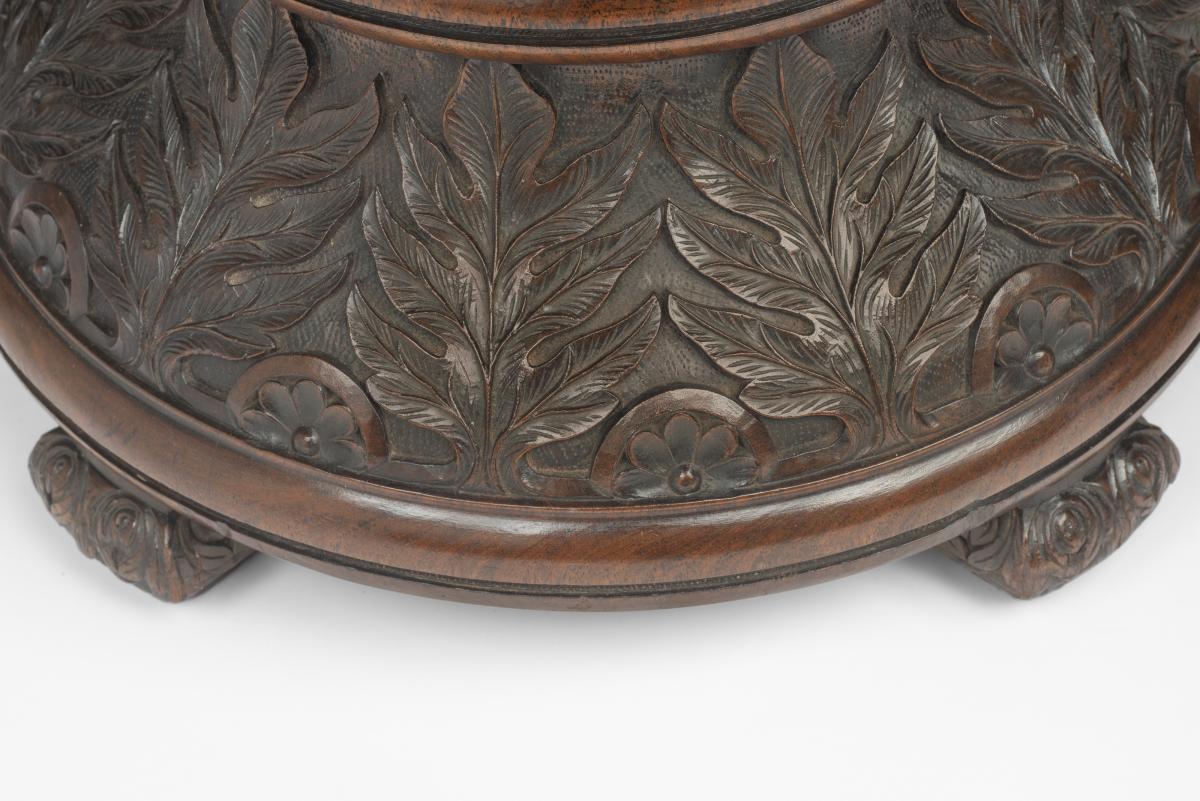
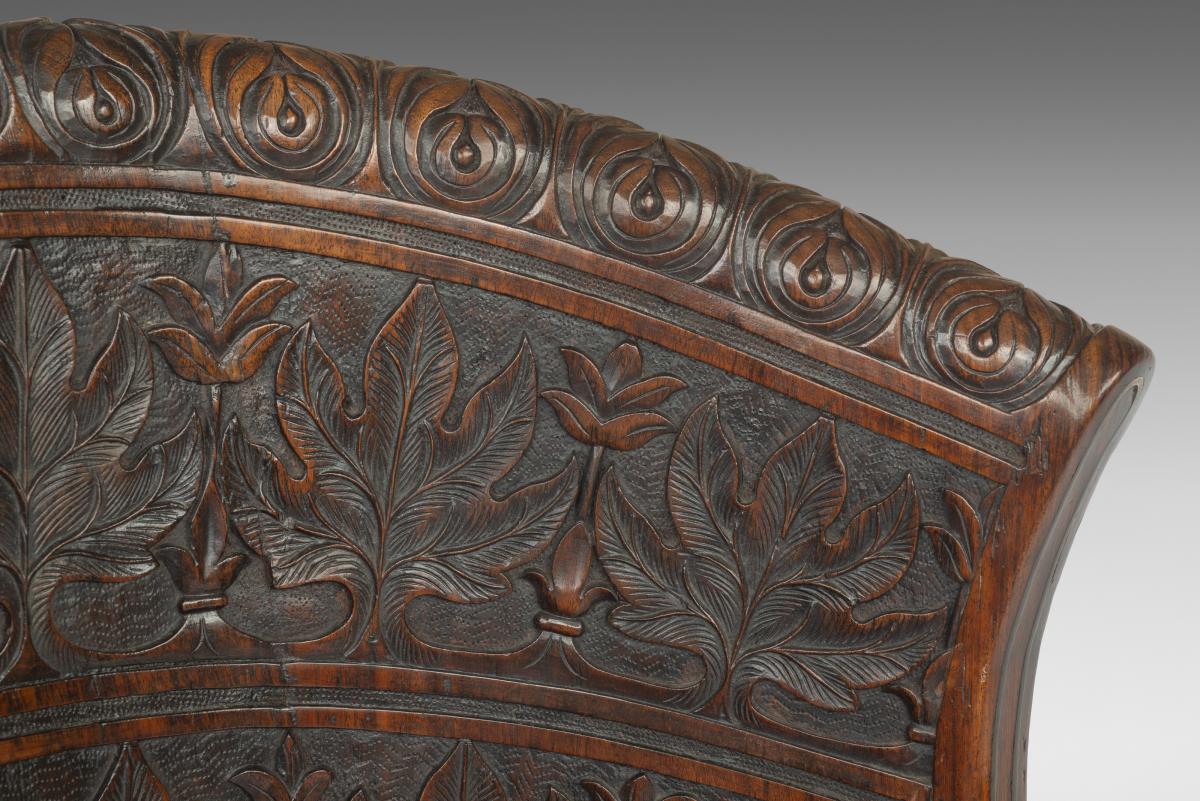
Price on application
This object includes complimentary, Insured Shipping / Delivery within the UK
This object is eligible for a Certificate of BADA Provenance
The BADA Standard
- Since 1918, BADA has been the leading association for the antiques and fine art trade
- Members are elected for their knowledge, integrity and quality of stock
- Our clients are protected by BADA’s code of conduct
- Our dealers’ membership is reviewed and renewed annually
- Bada.org is a non-profit site: clients deal directly with members and they pay no hidden fees
Pair of Anglo-Indian Carved Rosewood Revolving Throne Chairs.
India, Circa 1820-30.
Provenance:
Private Collection, UK.
Acquired in London antiques trade circa 1999.
Private Collection, UK.
The remarkably unusual – and apparently unique - design of these chairs embodies the spirit of decorative art production in India in 19th Century. Craftsmen created furniture often in a European form (and sometimes in Indian forms), and experimented with embellishing them with forms of Indian decoration associated with different regions of the country. The prolific relief carving continues all over these chairs both from and back and all around the base, with only the actual seat left uncarved. The creativity of these unknown chairmakers sought to impress both the Western visitor and the high ranking Indian, and resulted in the creation of wondrous new tradition of cross-cultural objects which illustrate their multifarious influences while becoming a new style in their own rite.
The idiosyncratic circular design of these chairs; with curved back, revolving seat and hour-glass form base may have its roots in the circular drum-shaped seats made of cane or clay that have been in evidence in India since ancient times (see Amin Jaffer, Furniture from British India and Ceylon, New Delhi 2001, p. 109). Those simple stools were sat on cross-legged, but the arrival of European traditions and notions of comfort saw the introduction of chair backs and more usually the adoption of Western forms of chair.
The circular form of the base, with half circle back support also relates to the rather magnificent gold throne made by Hafez Muhammad Multani for the Maharaja Ranjit Singh, in Lahore circa 1820 (now in the collection of the Victoria & Albert Museum; Accession No.: 2518 IS). While the present chairs are of circular, rather than cusped polygonal form, they also seem to derive from the lotus thrones of Hindu deities. The attenuated waist in the base echoing the two tiers of petals, and the carved lotus leaves at the top edge of the chairs and again on the feet. When discussing Ranjit Singh's throne, Amin Jaffer (Luxury Goods from India, V&A Publications 2002) notes that the lotus leaf, as a symbol of purity and creation, has long been employed as a seat for the gods.
Jaffer also notes (p. 103) that Ranjit Singh’s gold throne was copied in mahogany at the behest of Lord Dalhousie (Governor General 1848-56) in 1853. It was produced by Shearwood & Co in Calcutta and conceived as an octagonal state chairs (facsimile of Ranjeet Sings (sic) golden Throne’) on 8 feet panels mouldings and throughout minutely and elaborately carved in solid mahy. fitted with sold elaborately cut mouldings. It was sold together with the original invoice together with other contents of Colstoun by Sothebys on 22nd May 1990, lot 95. Lord Dalhousie’s mahogany version was originally intended to be gilded (but never was) but interestingly employs relief carving to render the embossed decoration of the original throne.
An interesting further individual decorative detail on these chairs, almost unnoticed amongst the magnificence of the carving, is the restrained line of brass inlay which follows up and down the front edges of the back and continues around the front edge of the seat in a continuous loop.
Dimensions
94.6 x 67.3 x 67.3 cmPrice on application
This object includes complimentary, Insured Shipping / Delivery within the UK
This object is eligible for a Certificate of BADA Provenance
Stock number
615aThe BADA Standard
- Since 1918, BADA has been the leading association for the antiques and fine art trade
- Members are elected for their knowledge, integrity and quality of stock
- Our clients are protected by BADA’s code of conduct
- Our dealers’ membership is reviewed and renewed annually
- Bada.org is a non-profit site: clients deal directly with members and they pay no hidden fees


